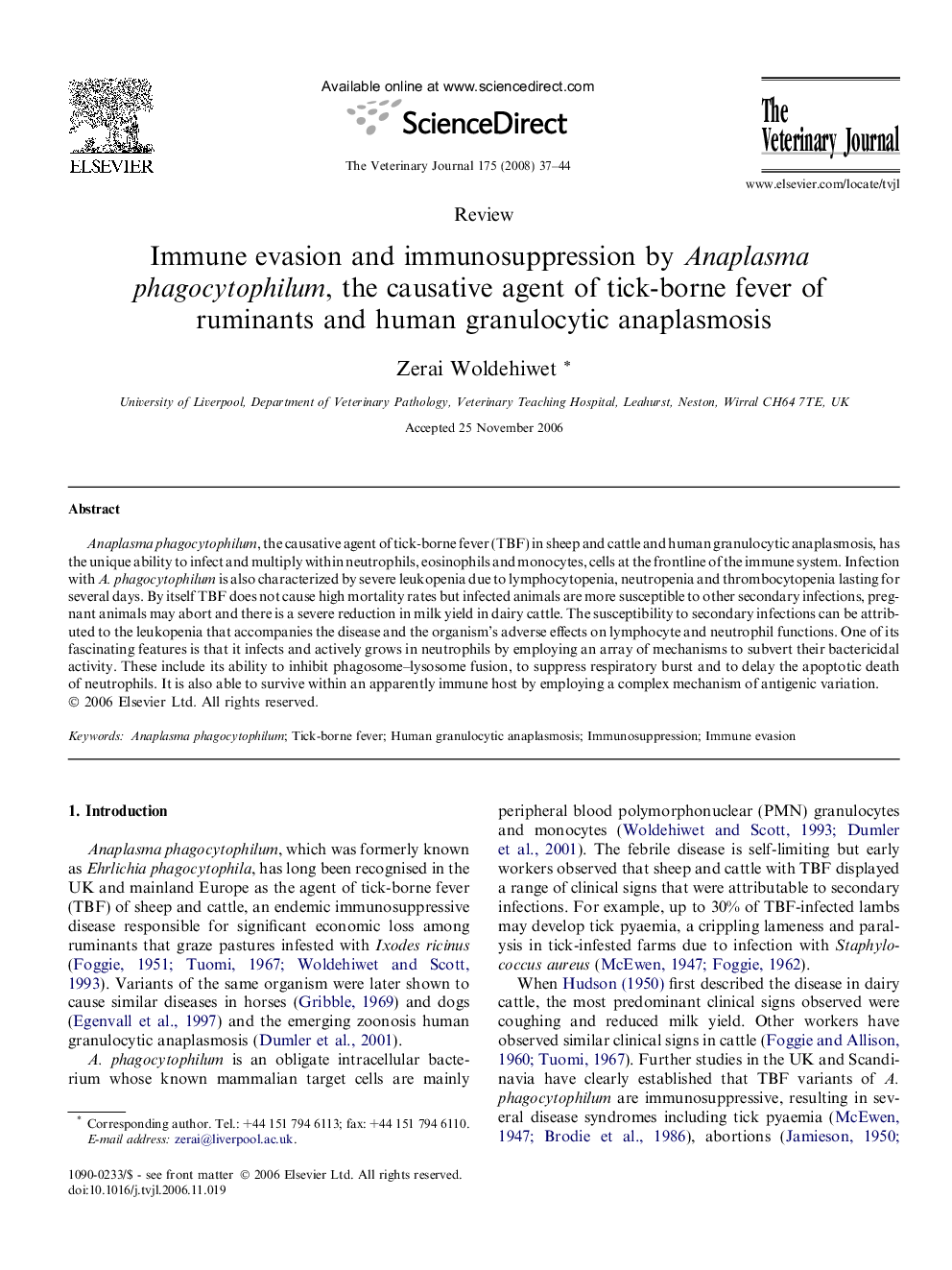| Article ID | Journal | Published Year | Pages | File Type |
|---|---|---|---|---|
| 2465483 | The Veterinary Journal | 2008 | 8 Pages |
Anaplasma phagocytophilum, the causative agent of tick-borne fever (TBF) in sheep and cattle and human granulocytic anaplasmosis, has the unique ability to infect and multiply within neutrophils, eosinophils and monocytes, cells at the frontline of the immune system. Infection with A. phagocytophilum is also characterized by severe leukopenia due to lymphocytopenia, neutropenia and thrombocytopenia lasting for several days. By itself TBF does not cause high mortality rates but infected animals are more susceptible to other secondary infections, pregnant animals may abort and there is a severe reduction in milk yield in dairy cattle. The susceptibility to secondary infections can be attributed to the leukopenia that accompanies the disease and the organism’s adverse effects on lymphocyte and neutrophil functions. One of its fascinating features is that it infects and actively grows in neutrophils by employing an array of mechanisms to subvert their bactericidal activity. These include its ability to inhibit phagosome–lysosome fusion, to suppress respiratory burst and to delay the apoptotic death of neutrophils. It is also able to survive within an apparently immune host by employing a complex mechanism of antigenic variation.
